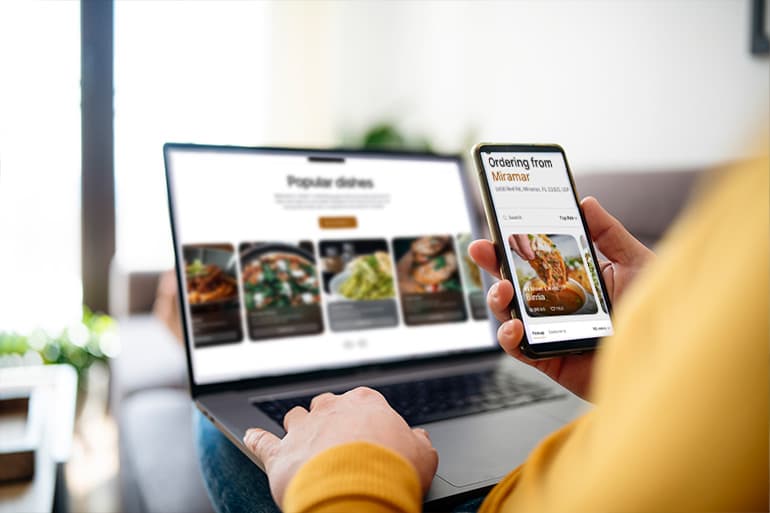Modern technologies are rapidly changing not only the lifestyle of consumers but also the business models of companies. In the restaurant industry, digital transformation is particularly evident in the realm of mobile apps and delivery. In the face of high competition and shifting demand, restaurants in Hungary are actively adopting technological solutions that allow them not only to survive but also to grow profits.
Digital Transformation in the Restaurant Industry
The development of mobile technologies has significantly accelerated the interaction process between a venue and its customer. If ten years ago food delivery was a rarity and mostly associated with pizza, today couriers deliver sushi, beef steaks, and even molecular cuisine. The reason behind this evolution lies in the simplicity of digital solutions, which allow customers to place an order from anywhere with just a few taps.
Restaurants in Hungary, especially in major cities, are adapting their business models to this new format. The implementation of modern platforms and digital services has become not just a trend but a necessary step toward sustainable growth.
Increase in Off-Premise Orders
One of the main drivers of profit growth is the expansion of the customer base beyond the physical restaurant space. Guests who previously couldn’t or didn’t want to visit the venue can now easily place orders at home or in the office. This is especially relevant in the evenings, on weekends, or during bad weather when in-house traffic decreases.
A practical example: a small café in Budapest, after joining a delivery platform, increased its total number of orders by 40% over three months, with more than half coming from online channels.
Increase in Average Check Size
Mobile apps create conditions for raising the average check through upselling features: add-ons, desserts, and drinks are offered on-screen before the order is finalized. These prompts work better than in-person suggestions because they don’t require direct interaction and are perceived as a logical extension of the selection.
Moreover, app users tend to spend more, especially if the order includes promotions, bonuses, or free delivery over a certain amount.
Automation and Reduced Operating Costs
Unlike phone orders, mobile apps help avoid information errors, reducing the number of returns and customer complaints. This, in turn, lowers the cost of resolving issues and increases customer loyalty.
Additionally, automated systems reduce the workload on staff, allowing for resource redistribution during peak hours. Couriers receive instructions directly from the system, while the kitchen gets an exact printout of the order.
Technology and Personalization
The emergence of digital solutions has taken customer service to a new level. Today, a restaurant is not just about cooking food but also about building a full-fledged relationship with the customer through the app—from analyzing preferences to offering personalized deals.
This opens the door to a deeper understanding of customer needs and the formation of lasting brand loyalty.
Analytics and Demand Forecasting
Mobile apps gather a large amount of data: dish popularity, order timing, customer preferences, and promotional effectiveness. This allows restaurants to make more informed decisions, develop seasonal offers, adjust menus, and manage inventory.
In practice, this means that during hot summer months, beverage and cold snack supplies can be increased, while in winter, hot soups and ready-to-heat meals can be emphasized.
Loyalty Programs and Personalized Offers
Through their own apps, restaurants can directly influence customer behavior—using bonus programs, personalized coupons, or notifications about new dishes. These tools generate repeat traffic and foster a habit of returning to “your” restaurant.
Push notifications are particularly effective as a way to remind customers at the right time, for example, during lunch hours or before the weekend.
How Restaurants in Hungary Can Adapt to Digital Trends
In a competitive environment and with increasingly tech-savvy customers, venues must not only adopt technology but use it strategically. From platform selection to packaging quality—every detail impacts reputation and profit.
Understanding the capabilities and limitations of digital solutions helps build a sustainable business model that can scale over time.
In-House Apps vs. Aggregators
For large chains and popular restaurants, developing their own app makes sense, as it allows them to control the entire customer journey—from choosing a dish to collecting feedback. However, for most venues, using existing delivery aggregators is more cost-effective.
It’s important to remember that with each order placed through a third-party platform, the restaurant loses a percentage of the profit (up to 30%), but gains access to a large audience that would be difficult to reach independently.
Investing in Infrastructure
Technological transformation requires investment: from installing receipt printers for deliveries to optimizing packaging and logistics. However, these costs pay off quickly—through increased turnover, improved service, and fewer refunds.
In some cases, Hungarian and European small business development funds offer subsidies for digitalization. This is an additional opportunity for small restaurants to reach a new level.
A Look Into the Future
Personalization, automation, and convenience are the three key pillars shaping the future of the restaurant business. Mobile technologies in this context are not just tools but an integral part of growth strategies.
Those willing to invest in innovation will not only retain loyal customers but also attract new audiences.
Conclusion
Mobile apps and delivery are more than just a convenience. They are a real source of additional revenue, a communication channel with the customer, and an essential part of branding. In Hungary, where the delivery market continues to grow, restaurants that have embraced digital transformation in time are already seeing returns on their investments. And this is only the beginning.

Comments are closed